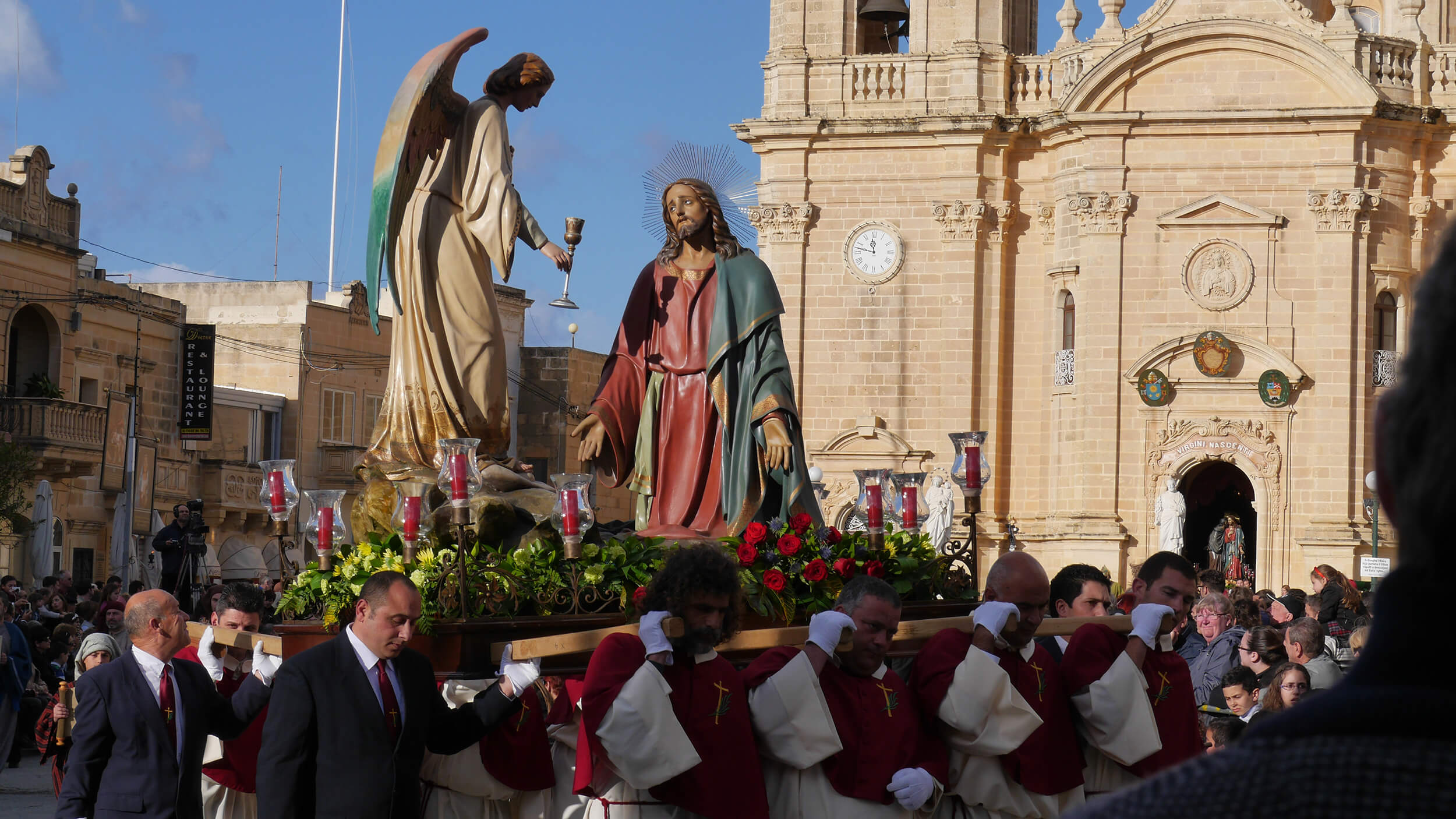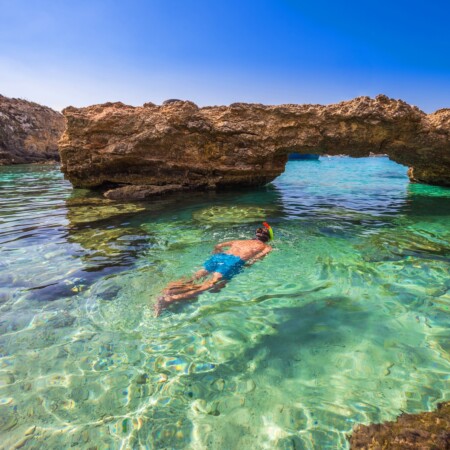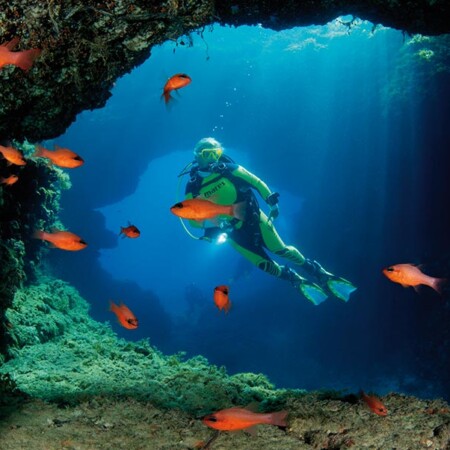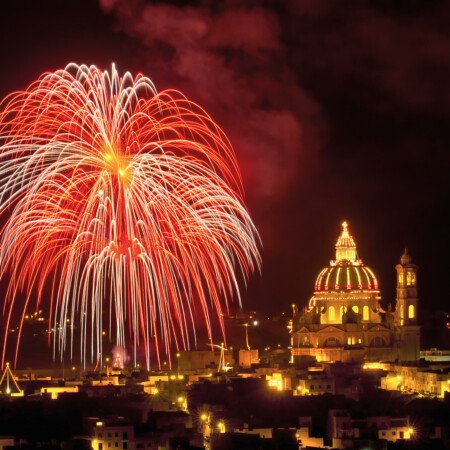Easter is one of the highlights of the year in Gozo. It celebrates the defining moment for Christianity, the death and resurrection of Jesus Christ, and comes after 40 days of fasting through Lent.
Lent is heralded by the Carnival, one last fling before the rigours of the traditional feast. It is broken, however, by two celebrations – Our Lady of Sorrows, with penitential processions in many villages, and the joy of Palm Sunday at the beginning of Holy Week.
Gozo’s traditions are, in many ways, shared with Malta. The cuisine changes, with hearty vegetable soup taking pride of place over meat, and sweets that avoid the use of animal products – kwarezimal.
Easter comes during spring, lambing season. This means that during Lent, fresh ġbejniet are in season. These delectable little cheeses, sold floating in their whey, are made by farmers in Malta, as well as in Gozo. The best ones come from Gozo, however.
But this is not what Easter in Gozo is all about. There are a multitude of reasons to go to Gozo for Easter. Holy Week is marked impressively. The Maundy Thursday services in the mid-afternoon lead to an establishment of the beautifully decorated Altars of Repose. The Altars are resplendent in the finest, each church has to offer. But the masterpiece is the flowers, contributed by the regular churchgoers. The dominant colour is white, epitomised by the lilies and zantedesca that flow out like a brilliant carpet.
Holy Week is also a time to visit the Last Supper tables set up in so many of Gozo’s villages. A lot of work goes into these displays. They often entail a lot of research into the authentic Jewish customs from the time of Christ. The tables attempt to recreate, as far as possible, the Passover supper Jesus would have had with his Apostles.
Various groups also establish exhibitions of models of the Good Friday statues. These exhibitions may not be high artistically, but they are fun and informative. The work that goes into putting them on is all voluntary, and is significant.
All this is leading up to Good Friday.
Gozo’s devotional processions might be representing the passion and death of Jesus Christ but nowhere than on the small island are the Good Friday traditions more deeply alive!
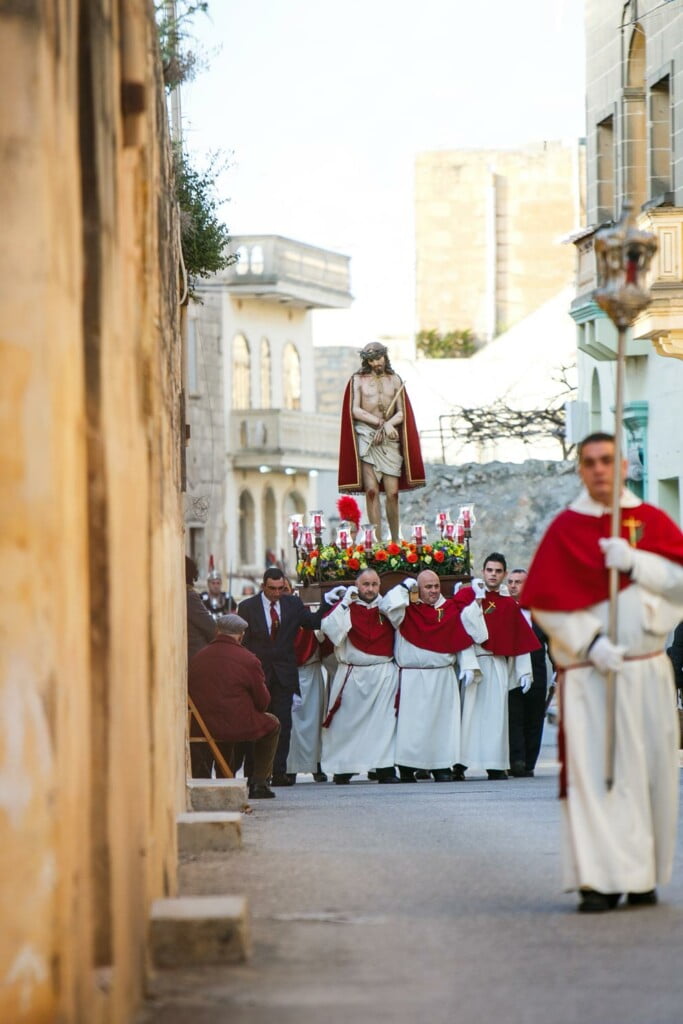
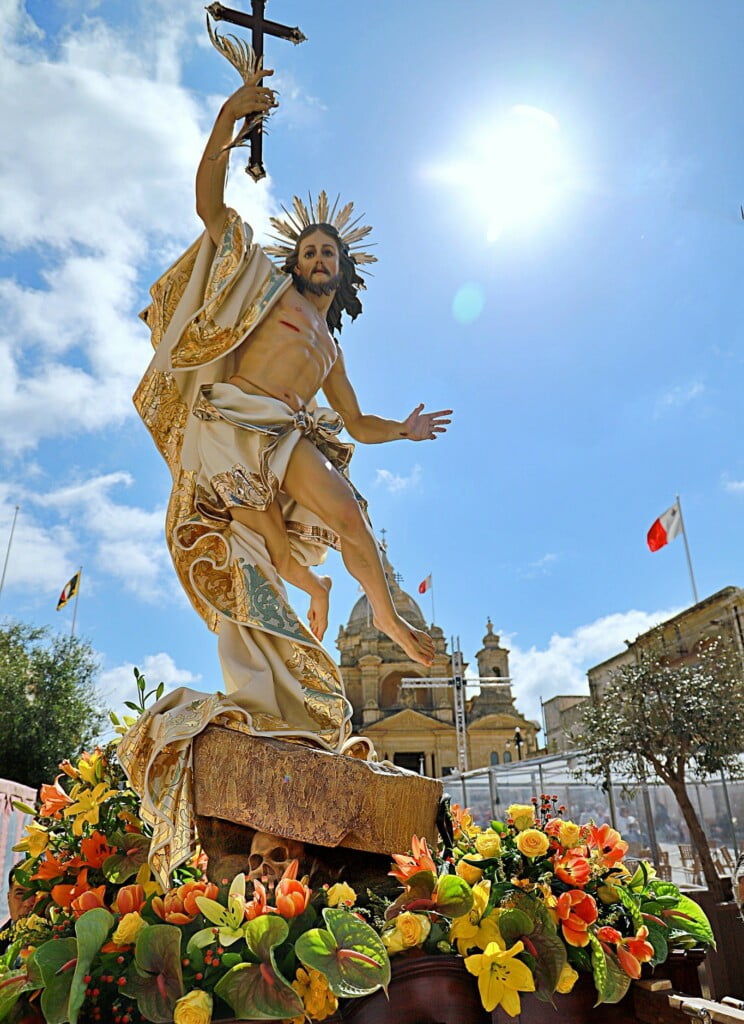
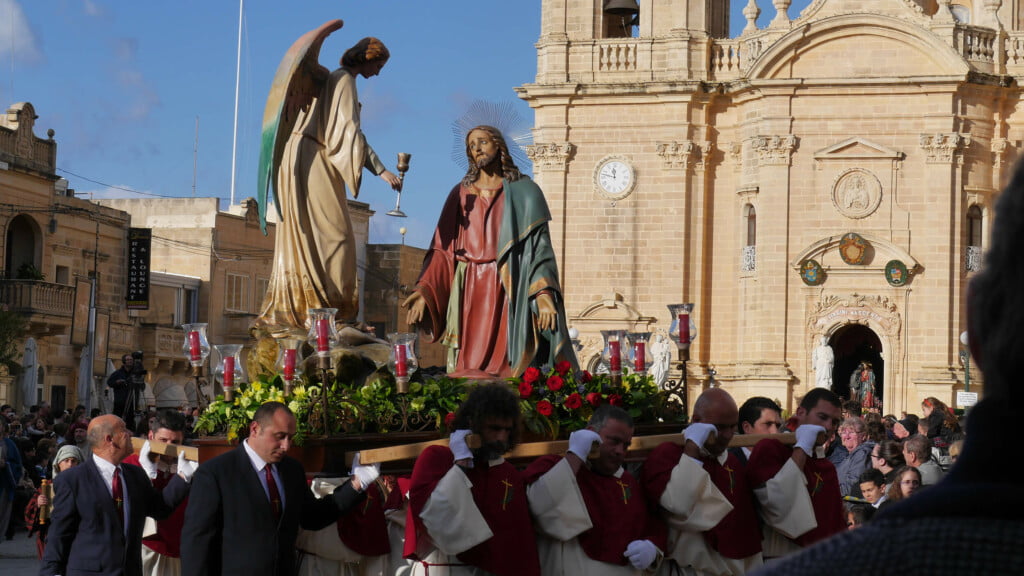
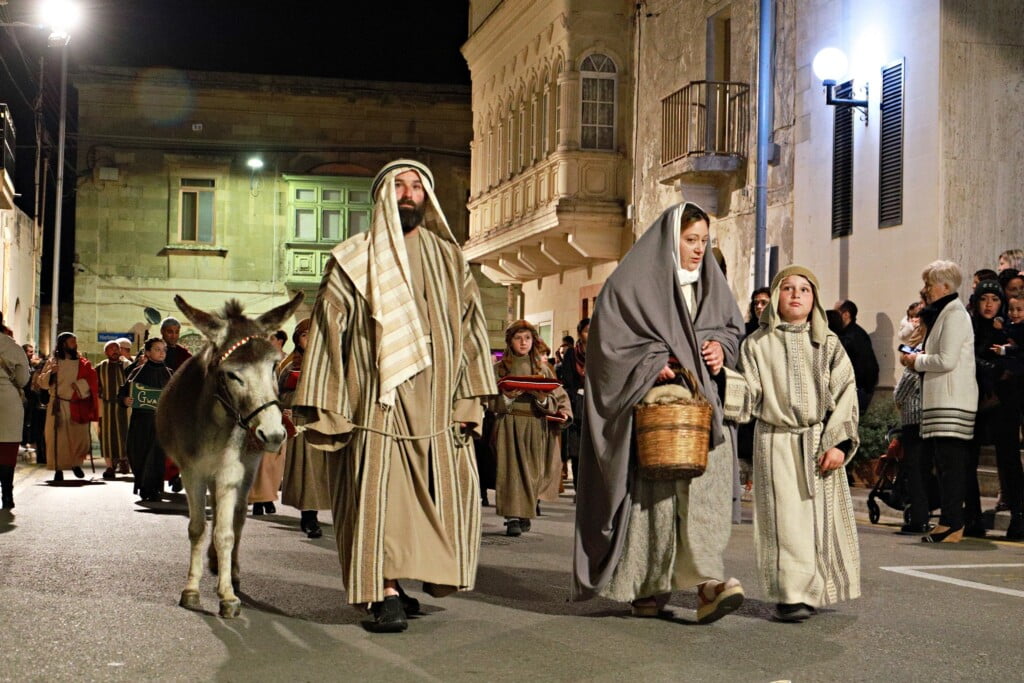
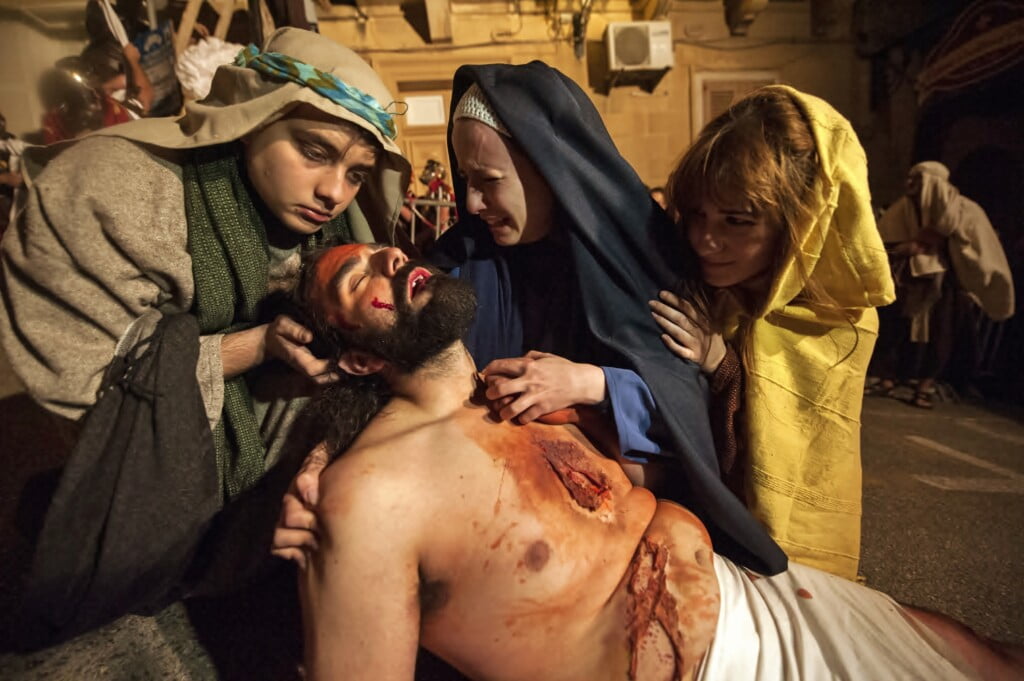
There is a deep solemnity to these processions in Gozo, a hush, a spirituality, as the stylized statues move slowly into the crowds, like barges up a river of people. Swaying in slow procession through the narrow streets, breaking up the crowds which press on either side of them, the statues are held high in a narrative which has touched the lives of thousands and survived for centuries.
Unsurprisingly, emotions often run high – the processions are, after all, a celebration of death and rebirth, but also invite reflection on suffering and penance. Flowers, animals, costumes, all are called in to recall us to a sense of those things which affect us all – faith and doubt, strength and weakness – and the spaces they occupy in our everyday lives.
The village of Xaghra procession is nowadays a grandiose affair complete with rich costumes, animals and biblical personages. Over 400 people take part during the current pageant.
Another village known for its Good Friday grandiose pageant is Nadur, with its large number of statues, personages and symbols of the passion of the Christ.
In Zebbug and Victoria the focus is very much on the pageantry. People dress up in costumes, taking on the role of various characters in the Bible. All processions are accompanied by bands playing suitably solemn marches. They make a very good show, and the villages’ streets are always lined with hundreds of spectators.
The Good Friday procession is not continuous. Every 50 meters or so, it stops, the statues rested on special poles. The atmosphere can be electric, and highlighted by the obvious signs of effort made.
Easter Sunday morning itself brings another procession, this time a more upbeat one in which the statue of the Risen Christ is carried round the streets. In the bright morning light, assuming the weather cooperates, the robes of the priests, the banners and flags of the confraternities attached to the church and the band ensure the splendid spectacle.
Easter Sunday continues with a family lunch. Lamb is of course an ideal meat. The main thing though is the togetherness the meal celebrates!
